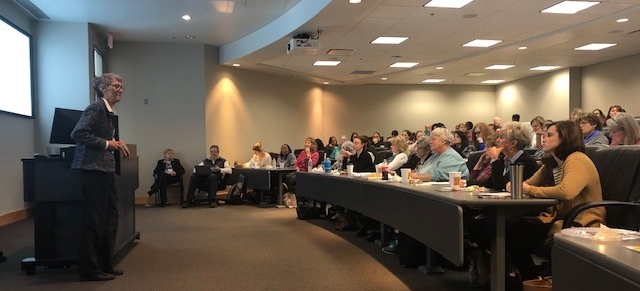Inside OU
OU-Tulsa Hosts
Youth Trafficking Conference
The OU-Tulsa campus hosted Haruv USA for a two-day conference to educate the community on the human trafficking of youth.

The OU-Tulsa campus hosted Haruv USA for a two-day conference to educate the community on the human trafficking of youth.
On February 12 and 13, Haruv USA at OU-Tulsa hosted a two-day conference for the community on the Human Trafficking of Youth. Haruv USA at OU-Tulsa is an international center of excellence and a recognized leader in the field of child maltreatment and provides comprehensive, inter-professional education, training and research in the prevention and treatment of child abuse and neglect. It is a partnership between the Haruv Institute in Israel, the OU Anne and Henry Zarrow School of Social Work and OU-Tulsa.
More than 90 community leaders attended the conference which featured Jordan Greenbaum, MD, the medical director of the Global Health Centre for Missing & Exploited Children and the medical director of the Institute on Healthcare & Human Trafficking at the Center for Safe & Healthy Children at Children’s Healthcare of Atlanta. Her lecture focused on Human Trafficking as a global perspective, the health impact on children, approach to prevention and a trauma-informed approach to identifying and working with trafficked children.
Attendees also participated in simulation experiences to help them practice newly-learned skills before incorporating them into their work. Simulations included a theater-style simulation facilitated by social work faculty which depicted the first interaction between a trafficked youth and an employee at a drop-in center for youth. This includes best- and worst-case scenario depictions for the audience.
There were also interactive, individual simulations including four different scenarios providers may encounter human trafficking victims, from the emergency department to a drop-in center for homeless youth. Participants live-viewed the simulations in real-time in the debriefing room. The simulation rooms were pulled up on a large TV monitor and allowed viewers to virtually “go into” each room to hear the interactions between participant and standardized patient, an actor.
STATS & BACKGROUND INFO